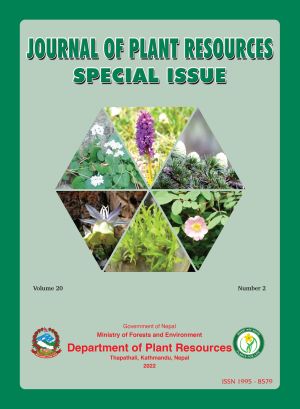Ex-situ Conservation Practice at National Botanical Garden, Godawari, Lalitpur, Nepal
DOI:
https://doi.org/10.3126/bdpr.v20i2.56984Keywords:
Biodiversity, Botanical gardens, Endemic, Plant conservation, Threatened plantsAbstract
Ex-situ conservation refers to the conservation of components of biological diversity outside their natural habitats. Since biodiversity is currently being lost at an unprecedented rate in their natural habitats, ex-situ conservation has become a suitable approach in their conservation. Botanical gardens are institutions or places that provide a suitable environment for the survival of threatened plant species. Through living plant collection, the botanical gardens have done tremendous contribution to ex-situ conservation of plant diversity which is in dire need for their conservation. With the establishment of National Botanical Garden (NBG) in Nepal in 1962, ex-situ conservation and protection of wild and threatened plant species has been properly addressed. A total of 547 taxa (542 species), 334 (331 species) of which are exotic and 213 (211 species) of which are native, have been preserved by NBG. NBG harbors 1 extinct in the wild, 1 critically endangered, 6 endangered, 5 vulnerable and 3 near threatened plant species according to the IUCN Red List categories, while 5 are endemic species to Nepal. It has also conserved CITES listed plant species (Appendix I- 1 species, Appendix II- 38 species and Appendix III- 2 species). Therefore, NBG plays a crucial role in the conservation of threatened species, educating the public and supporting them in understanding that conservation is a shared responsibility.




